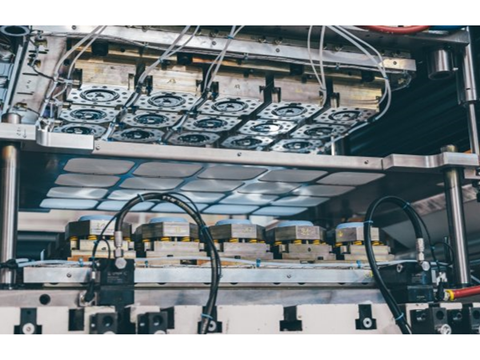
Stora Enso has announced the opening of its Dry Molded Fiber Production Unit in Skene, Sweden, utilizing PulPac’s process to produce fibre products such as cup lids, which reportedly have a lower CO2 footprint compared to single-use plastics.
The products produced with PulPac’s technology are designed to replace traditional plastics in food and beverage packaging, with production set to begin in Q4 2024 after large-scale testing. Stora Enso says the products offer a lower CO2 footprint compared to single-use plastics.
The company adds that the dry forming process provides flexibility in barrier additives for customized functionality and an ‘excellent’ surface finish with the option of advanced decoration. Unlike conventional wet forming, the dry process is said to ‘significantly’ reduce water and energy consumption, aiming to offer a more sustainable manufacturing method for fibre-based packaging.
Apparently, any excess material is recaptured and reused, ‘ensuring a circular process with minimal waste’. Stora Enso states the Dry Molded Fiber technology provides efficient production at high speeds, hoping to enable the company to meet growing market demand for fully renewable, recyclable, and biodegradable fibre-based packaging solutions.
“Stora Enso is the first producer to successfully implement this new dry forming technology on a large scale,” says Anna Stenström, operation director at the Skene Production Unit. “We are truly excited to pioneer this new approach and to explore all the possibilities it offers to shape the future of sustainable packaging.”
In April, ICA Sweden implemented Stora Enso’s moulded wood fibre trays for flowers in place of traditional polystyrene alternatives, claiming the transition reduced CO2 emissions by up to 81%. The trays are reportedly produced using 100% green electricity and said to be free of plastic and PFAS.
This summer, Huhtamaki and Starbucks trialled compostable cups for cold beverages in certain US locations, constituting of moulded fibre lids and double-walled paperboard cups with a bioplastic liner. It is hoped that modifying its cups and lids will help Starbucks achieve its new 2030 targets, including achieving 100% reusability, recyclability or compostability and ensuring its packaging is sourced from 50% recycled materials.
If you liked this story, you might also enjoy:
The ultimate guide to the Packaging and Packaging Waste Regulation in 2024
How are the top brands progressing on packaging sustainability?
Sustainable Innovation Report 2024: Current trends and future priorities
Everything you need to know about global plastic sustainability regulation












No comments yet